Italy 2016
April 14, 2016
Our direct flight to Rome leaves a little late from Charlotte, at around 6:45 P.M. on Wednesday night, landing at Rome's Leonardo da Vinci airport at 9:45 A. M. on Thursday. We get our luggage and Gary takes his place in a long line at the car rental counter. I take a seat in the waiting area, which is quite crowded, so I wedge myself in between a young woman and an older woman who has taken off her shoes. She is waiting with a boy of about twelve or thirteen who is obviously her grandson. They are from the U.S. - that much I can gather from listening in on their conversation (a habit which is either good or bad, depending upon your point of view). I would have struck up a conversation with them (another habit of mine, which I consider a good one!), but I was too jet-lagged to do much of anything other than just observe my surroundings without expending the extra energy required to talk. After (what seems to me) an interminable wait, and fully utilizing this first opportunity to practice his Italian, Gary gets the keys to the rental car-a silver Fiat 500X (he asked specifically for an Italian car). Hey-we're in Rome, right? So we do as the Romans do!
We set off on the road south to Naples, our stop for the next two nights. We break up the 2-1/2 hour drive by stopping for a "quick bite" along the way. We soon realize that a "quick bite" means something altogether different in Italy!
April 14, 2016 (Continued)
We stop at Ristorante Nonna Luisella in Castrocielo, which is in the Province of Frosinone in the Lazio region, about 78 miles southeast of Rome. There are two tables occupied by several men obviously on their (long) lunchbreak, and we are greeted warmly in Italian by the hostess. Based on the menu, which offers all the options for a full dinner (antipasti, primi, secondi, contorno, dolce), we soon realize that our stop here is going to take much longer than we had expected.
Naples
April 14, 2016
April 14, 2016
Our direct flight to Rome leaves a little late from Charlotte, at around 6:45 P.M. on Wednesday night, landing at Rome's Leonardo da Vinci airport at 9:45 A. M. on Thursday. We get our luggage and Gary takes his place in a long line at the car rental counter. I take a seat in the waiting area, which is quite crowded, so I wedge myself in between a young woman and an older woman who has taken off her shoes. She is waiting with a boy of about twelve or thirteen who is obviously her grandson. They are from the U.S. - that much I can gather from listening in on their conversation (a habit which is either good or bad, depending upon your point of view). I would have struck up a conversation with them (another habit of mine, which I consider a good one!), but I was too jet-lagged to do much of anything other than just observe my surroundings without expending the extra energy required to talk. After (what seems to me) an interminable wait, and fully utilizing this first opportunity to practice his Italian, Gary gets the keys to the rental car-a silver Fiat 500X (he asked specifically for an Italian car). Hey-we're in Rome, right? So we do as the Romans do!
We set off on the road south to Naples, our stop for the next two nights. We break up the 2-1/2 hour drive by stopping for a "quick bite" along the way. We soon realize that a "quick bite" means something altogether different in Italy!
April 14, 2016 (Continued)
We stop at Ristorante Nonna Luisella in Castrocielo, which is in the Province of Frosinone in the Lazio region, about 78 miles southeast of Rome. There are two tables occupied by several men obviously on their (long) lunchbreak, and we are greeted warmly in Italian by the hostess. Based on the menu, which offers all the options for a full dinner (antipasti, primi, secondi, contorno, dolce), we soon realize that our stop here is going to take much longer than we had expected.
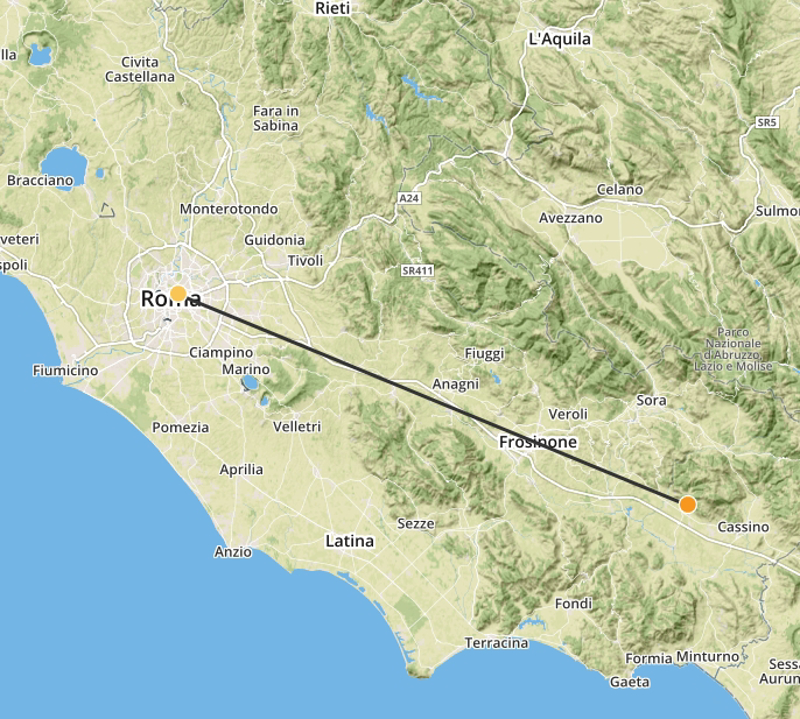
April 14, 2016 (Continued)
We should have realized that any restaurant with the word "nonna" in the name (nonna" means "grandmother" in Italian) is not going to let you leave without "mangia, mangia"! After we order way more than a "quick bite", the hostess comes around with two very large bruschetta, which are delicious, with fresh bright red tomatoes and excellent olive oil, accompanied by a plate of sliced salami. The hostess tells us that this is an "on the house" appetizer. At this point, we give in to the Italian lunch sensibility and order a glass of wine. As I glance around at the other tables, I notice several flute glasses and think it odd that all of these men are drinking sparkling wine. I soon realize why when the hostess brings around glasses of sparkling wine, once again "dalla casa". So by the time Gary's pasta and my caprese salad are finished, we are in the mood for a siesta, but we have another 70 miles to go to get to Naples.
Below: View of Mount Asprano from Nonna Luisella's
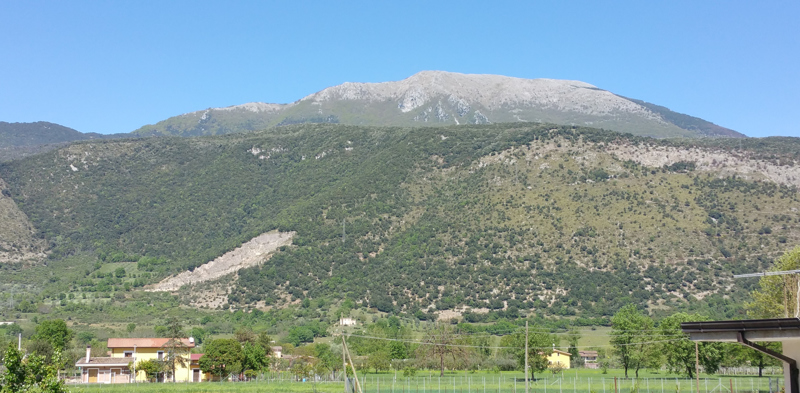
April 14, 2016 (Continued)
The drive into the city of Naples is anything but welcoming. The closer we get, the worse the traffic becomes, with motorbikes weaving in and out among the cars with no seeming thought to safety. If you happen to be one of the first two or three cars stopped at a traffic light, you are accosted by young men who immediately begin washing your windshield, obviously expecting to be paid for the unsolicited service. The road is littered with trash and the neighborhoods appear unkempt, with shabby-looking tenement buildings lining the streets.
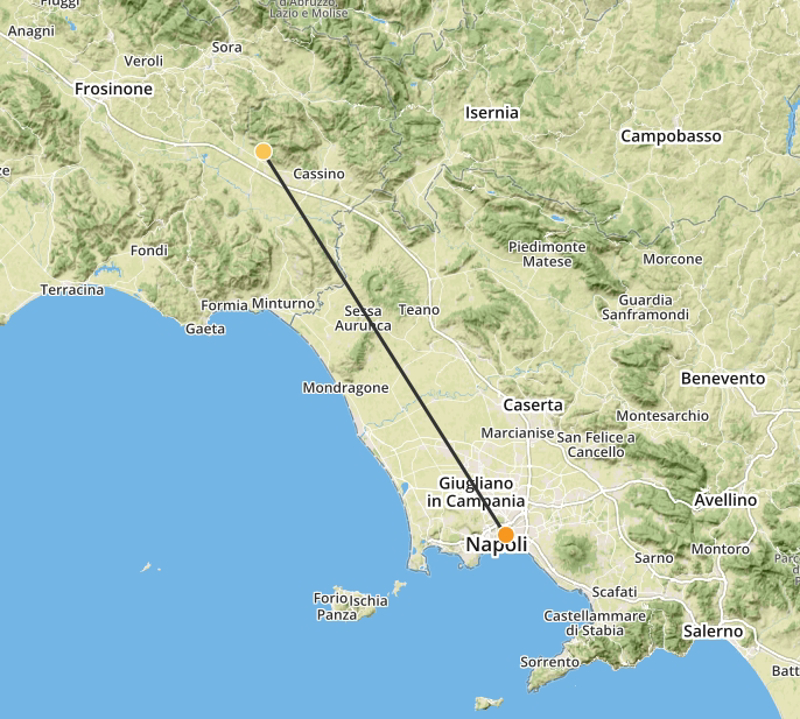
April 14, 2016 (Continued)
Even though we have the address of the hotel, the Renaissance Naples Hotel Mediterraneo, in the car's GPS, it doesn't seem to do us any good at all. We wind through the narrow streets, which are crowded with cars that don't seem to have any regard for traffic rules. Even though the GPS says that we are near the hotel, we can't find it and just end up driving around aimlessly until finally Gary decides just to pull over to the curb to get our bearings. It is only then that we realize we are parked right in front of the Hotel Mediterraneo!
Below: View of Naples Bay, Mount Vesuvius and Castel Nuovo from hotel rooftop terrace
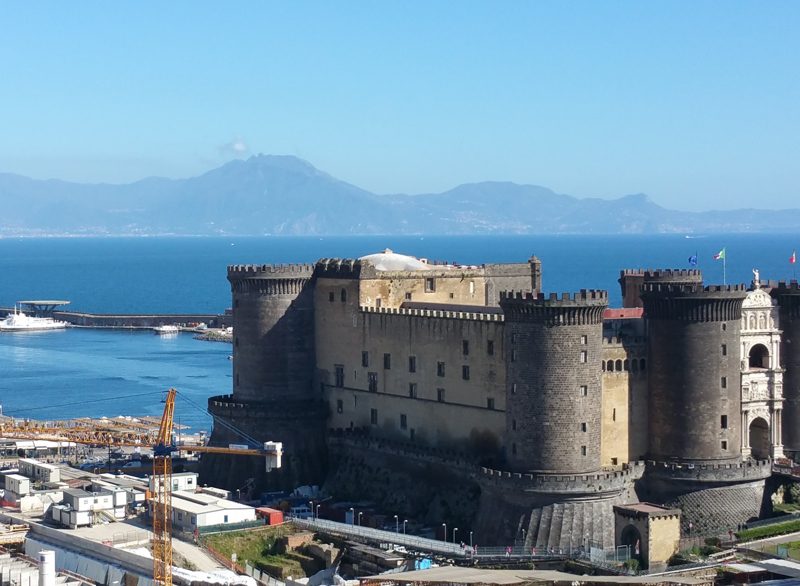
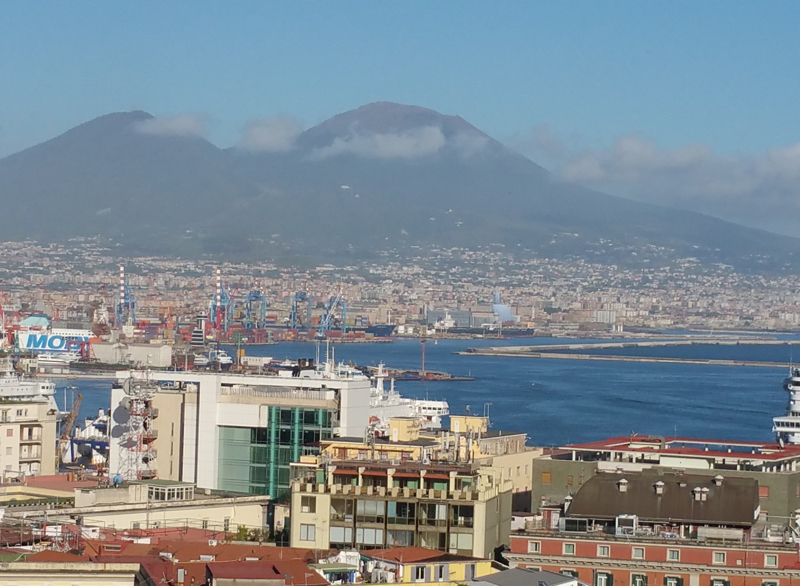

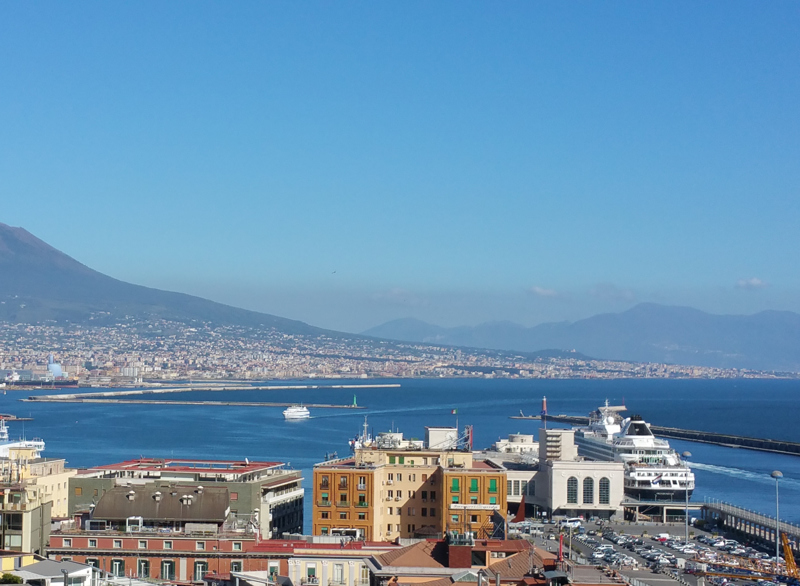
Above: A jet-lagged Kerry in hotel lobby; Neopolitan pizza; Fountain of Neptune in Municipio Square
April 14, 2016 (Continued)
We put the car in the garage and check in. The hotel is lovely, with a wonderful rooftop terrace from which you can see the Bay of Naples and Mount Vesuvius. We ask the concierge for a recommendation for some Neopolitan pizza, and he suggests the trattoria/pizzeria Ciro A Medina on Via Medina. We go to the restaurant and order two pizzas, which are pretty good, but not great, in our opinion. As we are sitting there, who should come in the door but the woman who had her shoes off at the car rental counter, along with her husband and grandson!
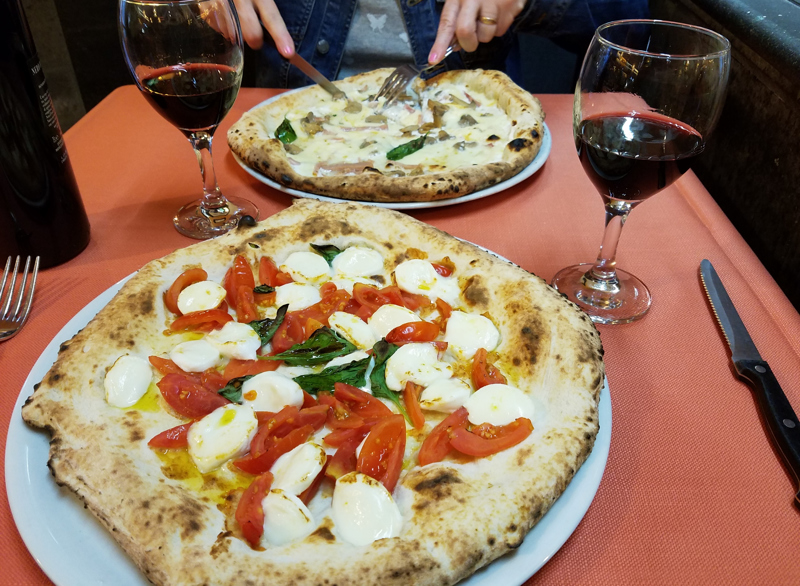
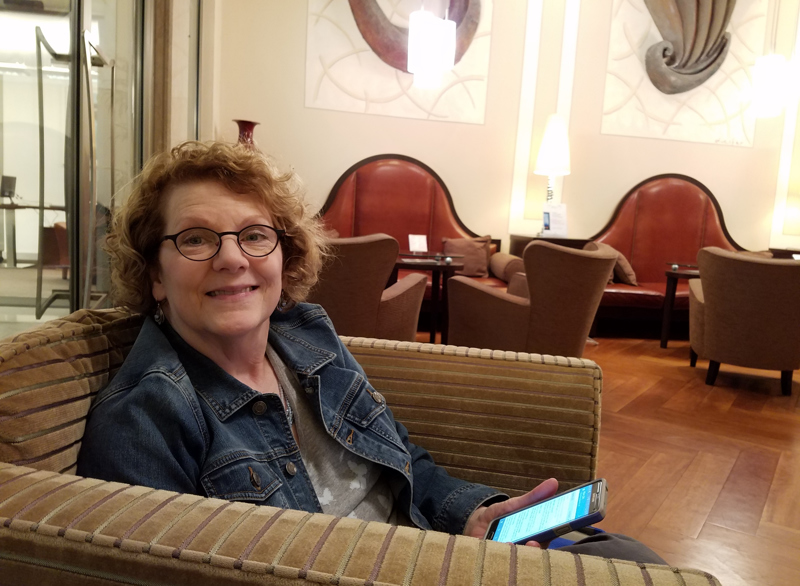
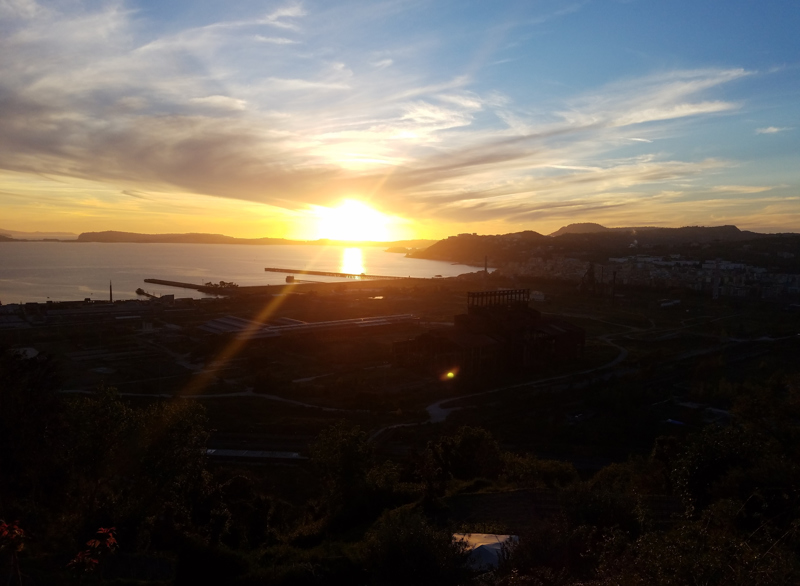
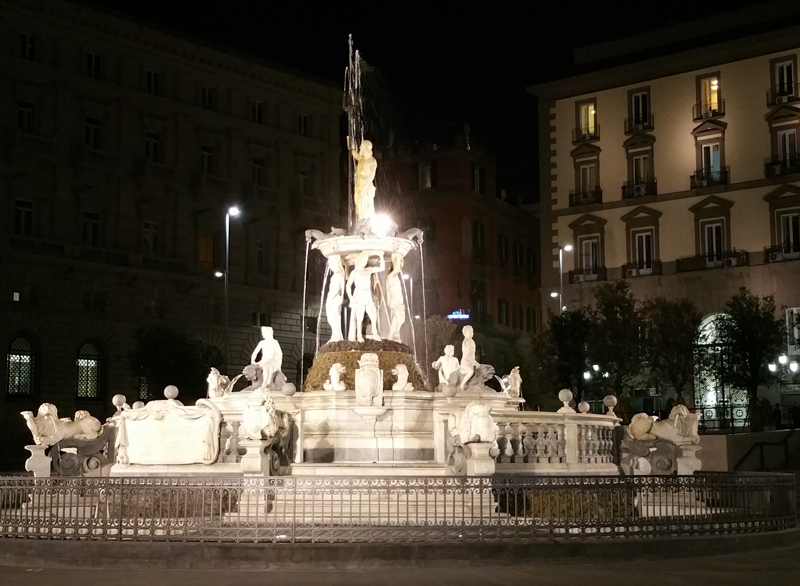
April 14, 2016 (Continued)
At that point, we had to strike up a conversation with them. It turns out that they are from Austin, Texas, and were treating their grandson to a trip to Italy for his good performance at school. It is indeed a small world!
Below: Neo-Gothic facade and interior of the Duomo of Naples; Chapel of San Gennaro; Chapel of St. Restituta
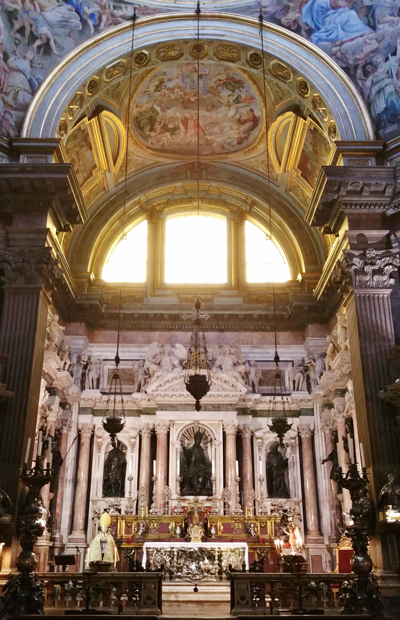
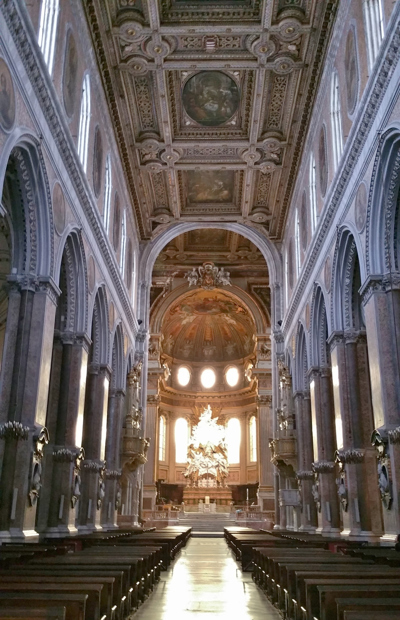
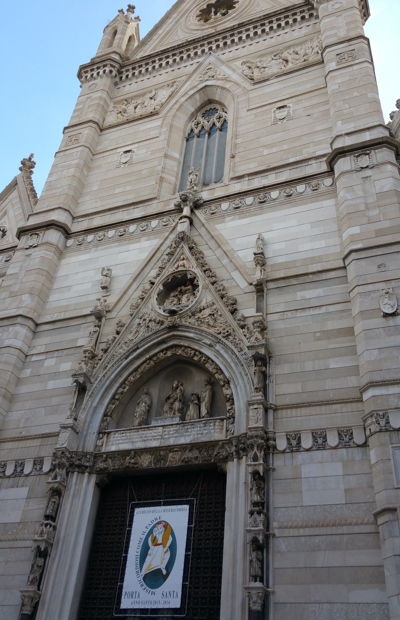

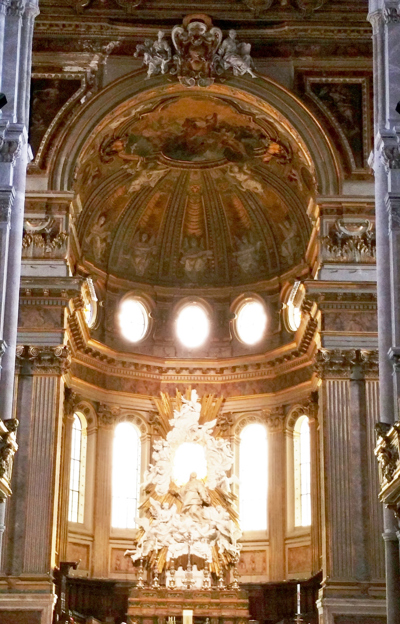
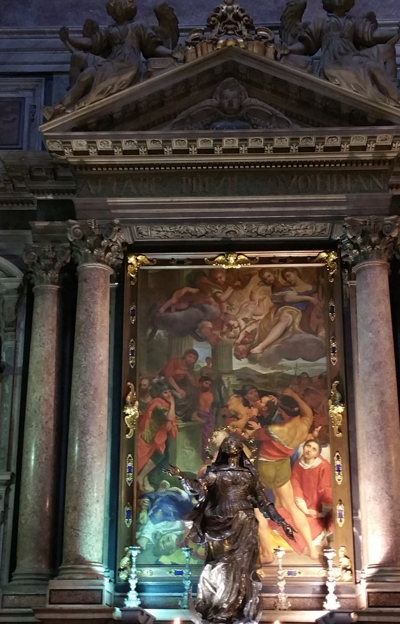
Above: Dome of Chapel of San Gennaro, with frescoes by Domenichino and Giovanni Lanfranco; Louie, Gary and Roberta; View of Naples
April 15, 2016
Since Gary has to work, I have booked a tour of Naples and Pompeii. I get up bright and early on Friday morning to meet the driver in the lobby of the hotel. For the tour of Naples, there are only four of us: Louie from Chicago and Gary and Roberta from Sydney, Australia. Gary and Roberta are doing the tour as a shore excursion from their cruise ship, as part of their 100-day cruise. We meet our tour guide, Elisa Cassiani, who takes us to the Duomo of Naples, a beautiful Gothic
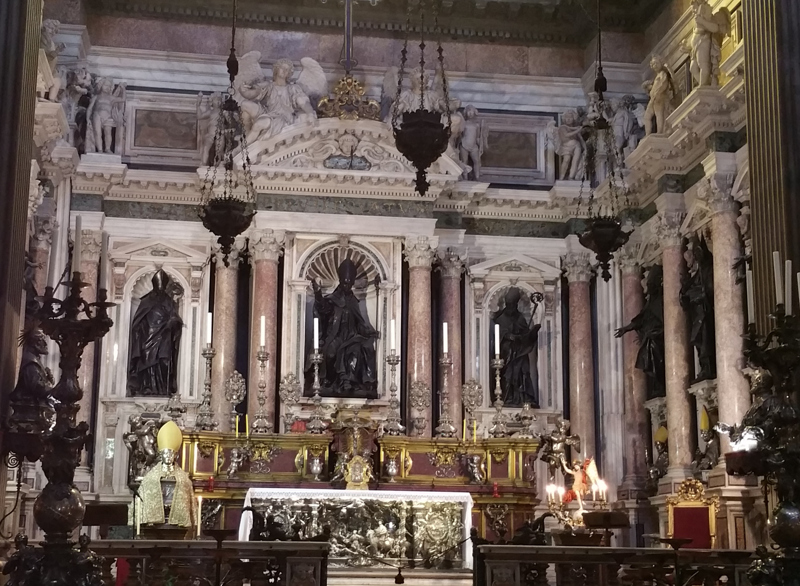
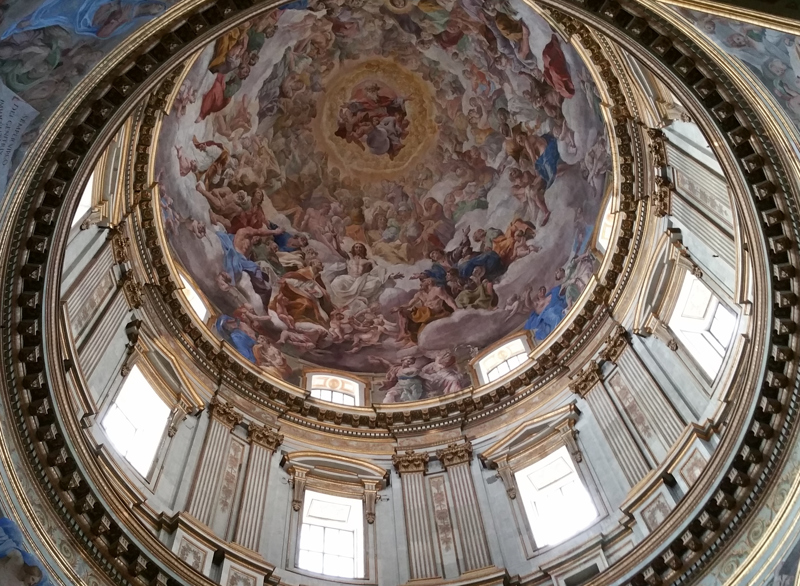
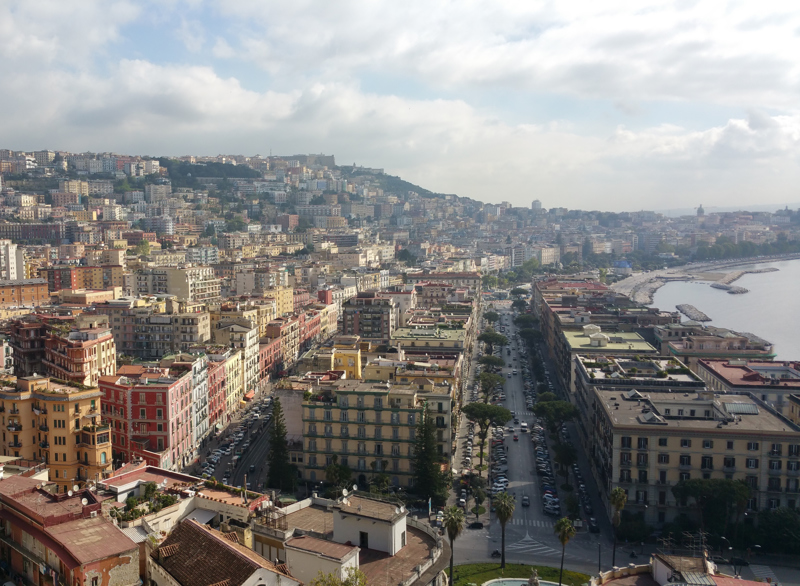
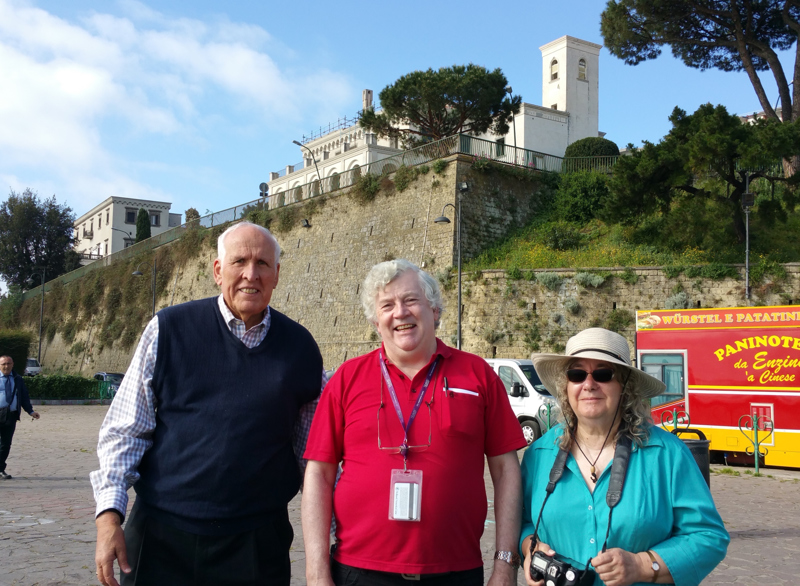
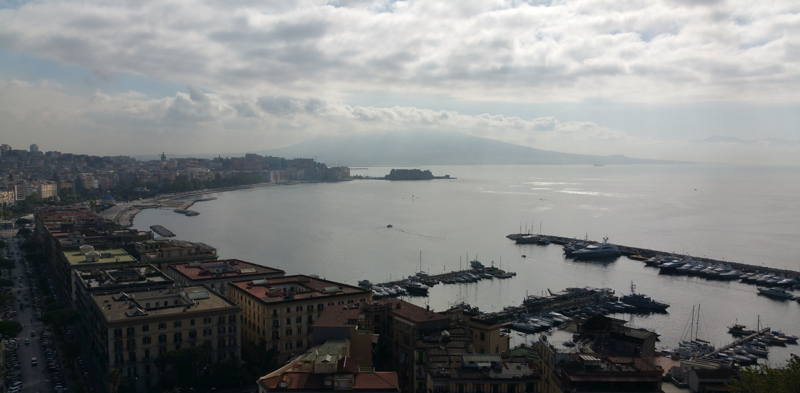
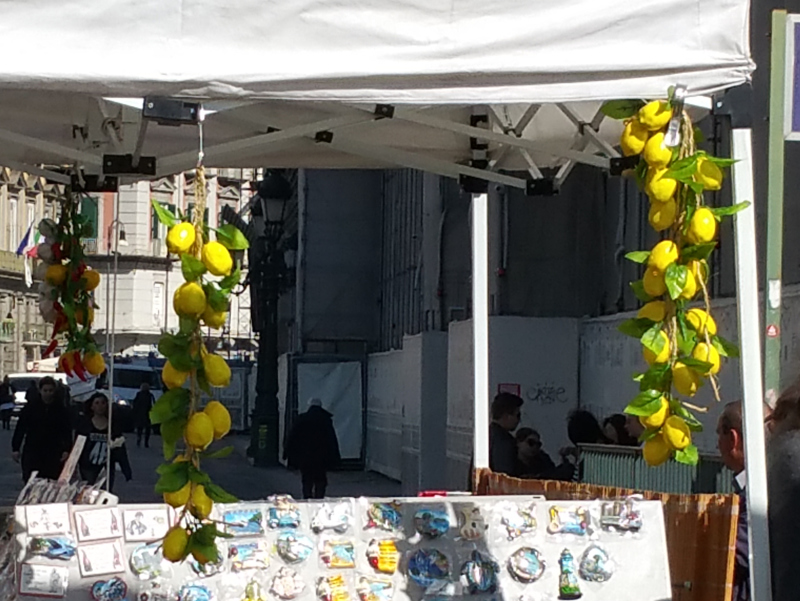
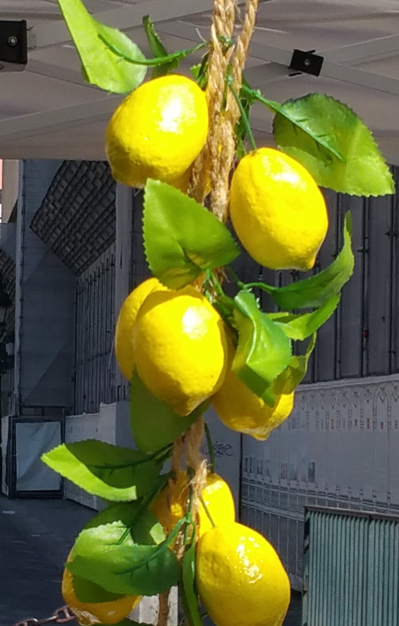
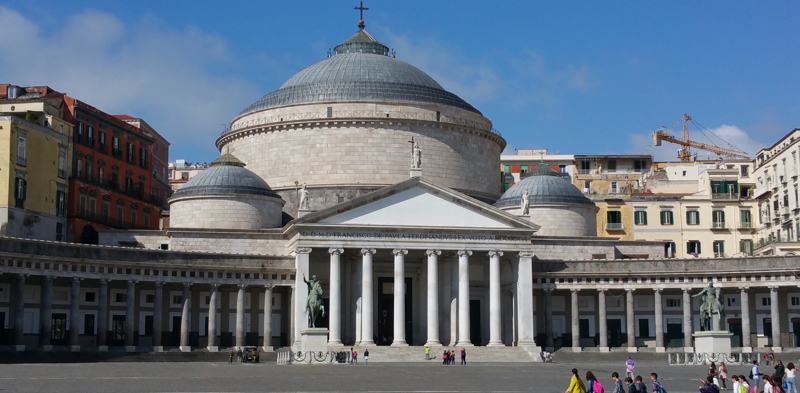
Left: View of Naples Bay from San Martino hill; fresh lemons sold at market; Church of San Francesco di Paolo in the Piazza del Plebiscito
April 15, 2016 (Continued)
cathedral which was built in the 12th century and is dedicated to Naples' patron saint, San Gennaro. The "Miracle of San Gennaro" occurs three times a year (on the first Saturday in May, September 19 and December 16), when the dried blood of San Gennaro is brought out in a vial. The miracle occurs when the blood liquefies. If the blood remains solid, according to the legend, bad things will happen to the city. The blood has failed to liquefy several times, each time coinciding with the outbreak of disease, famine, war, political suppression or the eruption of a volcano!
We board the bus for a tour of Naples, stopping for a view of the city from the hills above on Via San Martino. We stop to take a walk on the Piazza del Plebiscito, named for the 1861 vote (plebiscito, or plebiscite) in which Naples chose to join Italy. The piazza features the Church of San Francesco di Paolo, with its Pantheon-inspired dome and broad, arching collonades.
The tour of the city concludes and at this point I join a larger group to go to Pompeii, which is a 40-minute bus ride from Naples.
Pages 12-14: Scenes from Pompeii
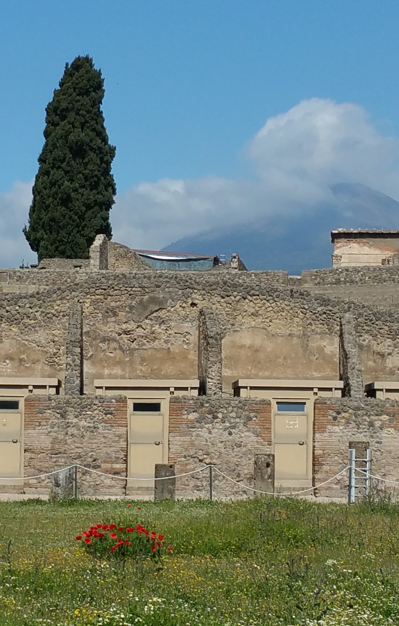
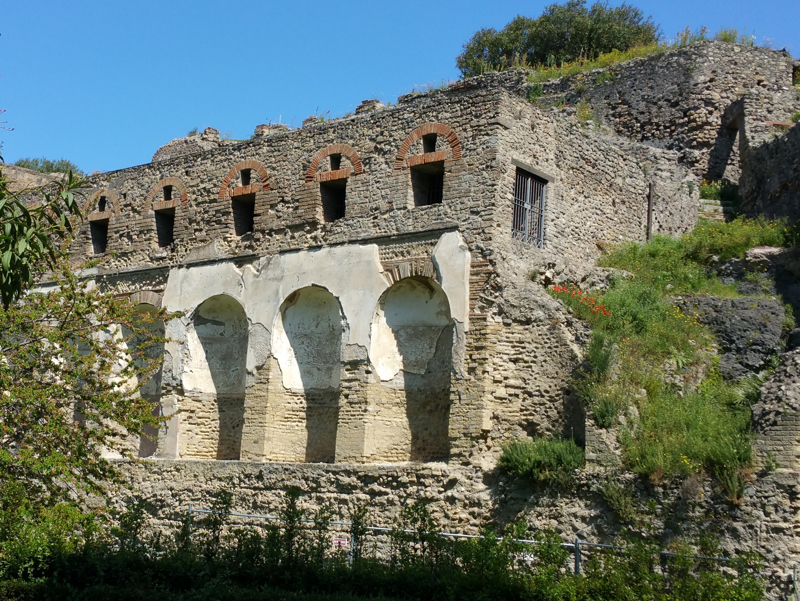
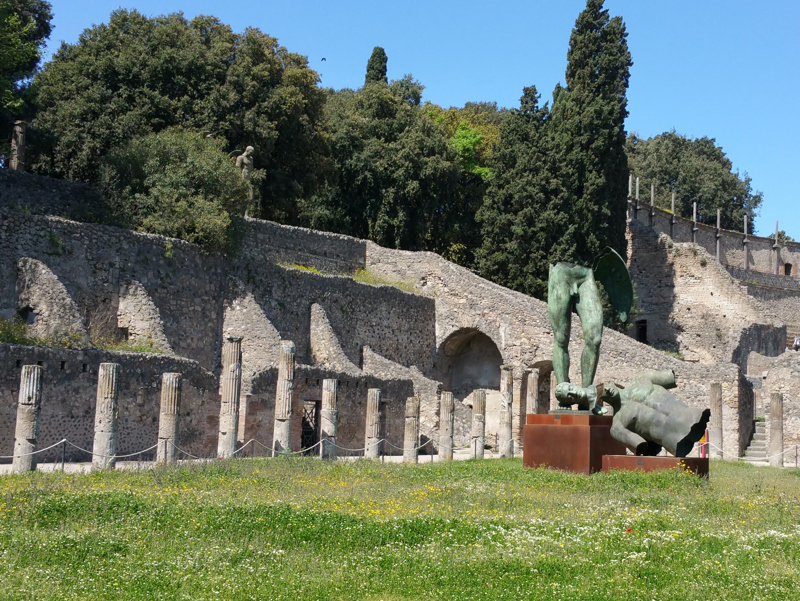
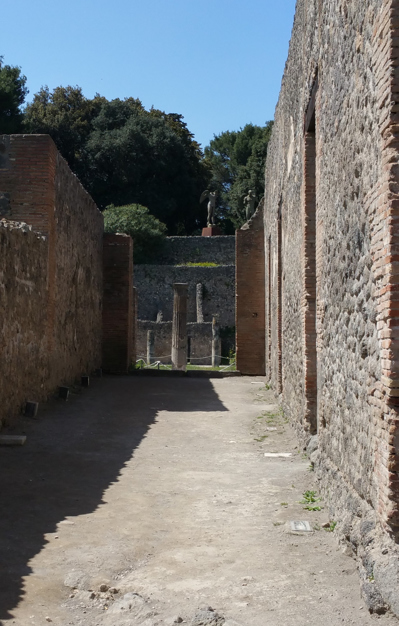
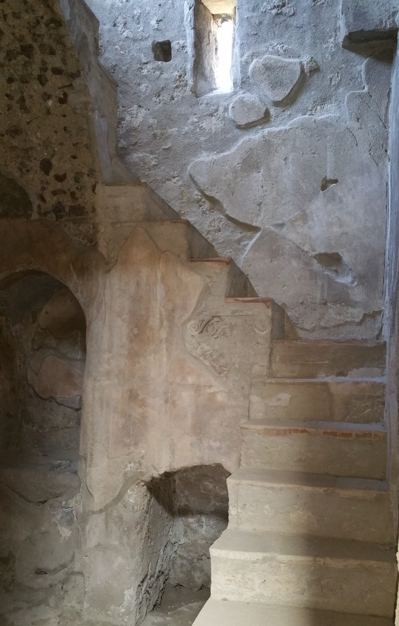
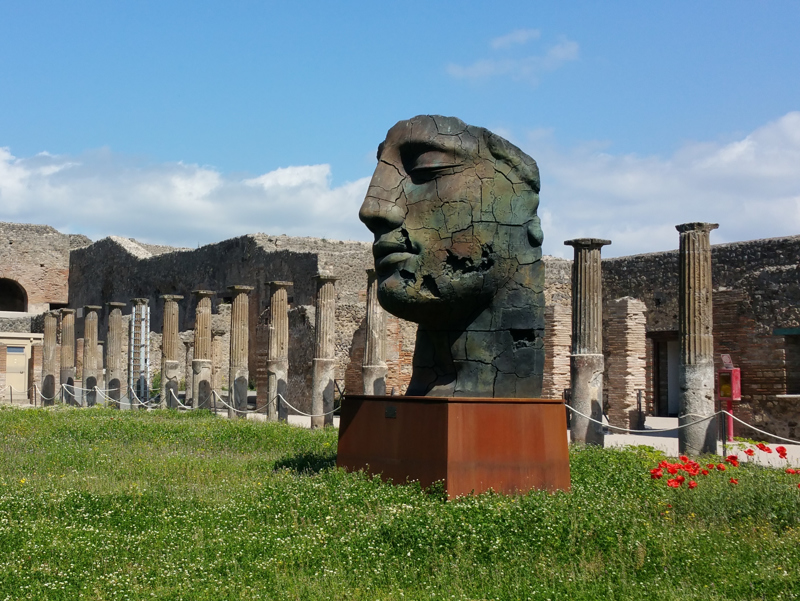
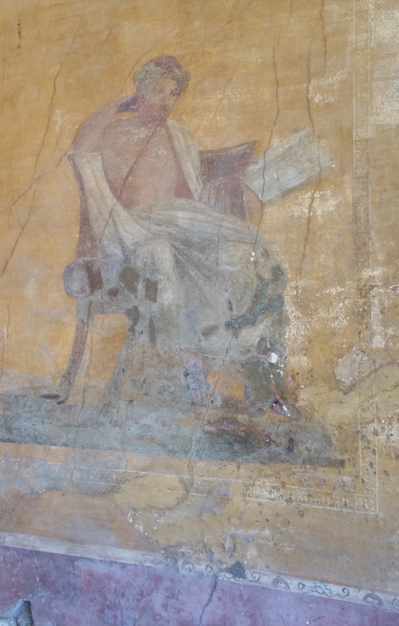
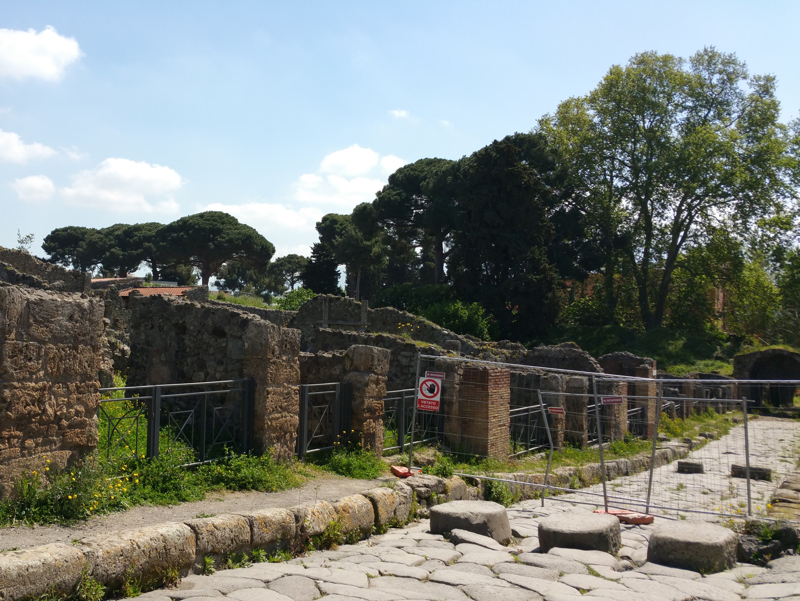
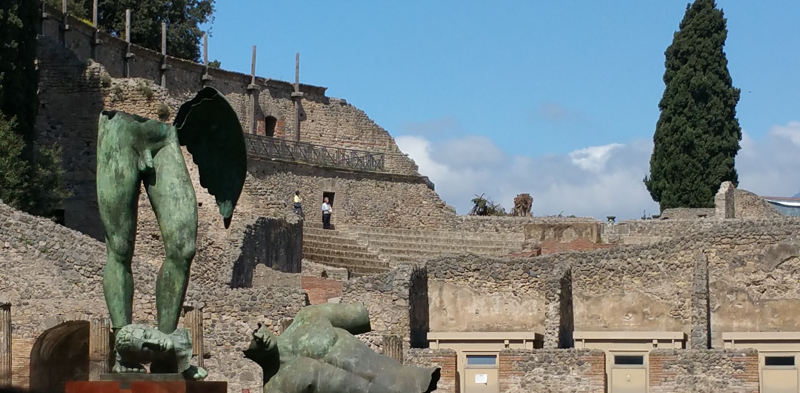
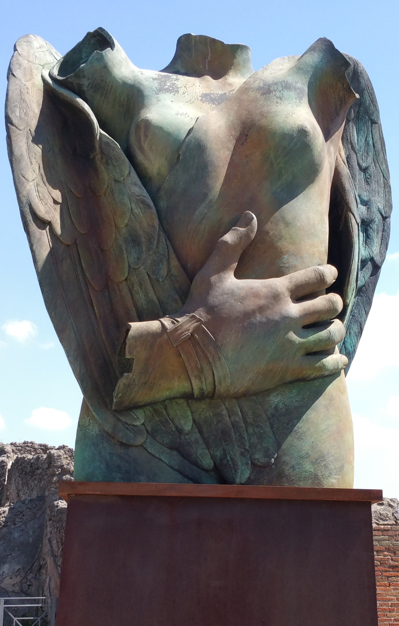
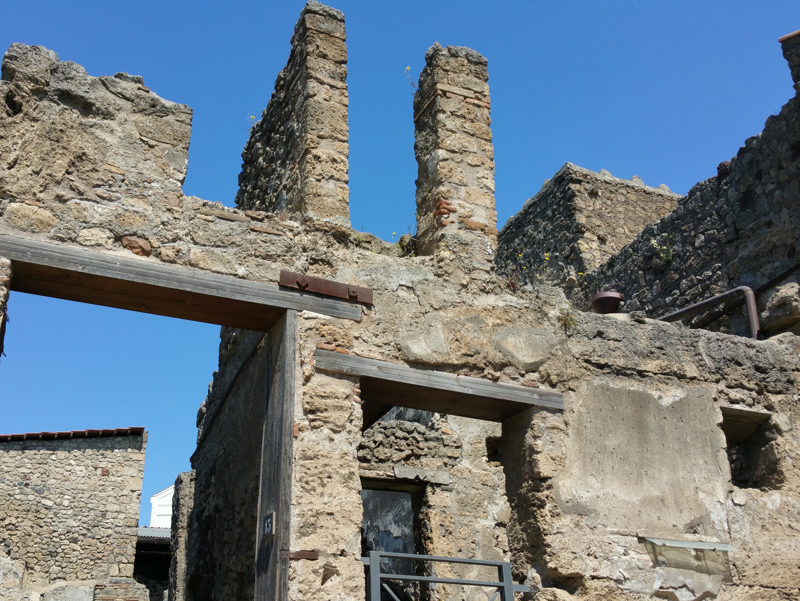
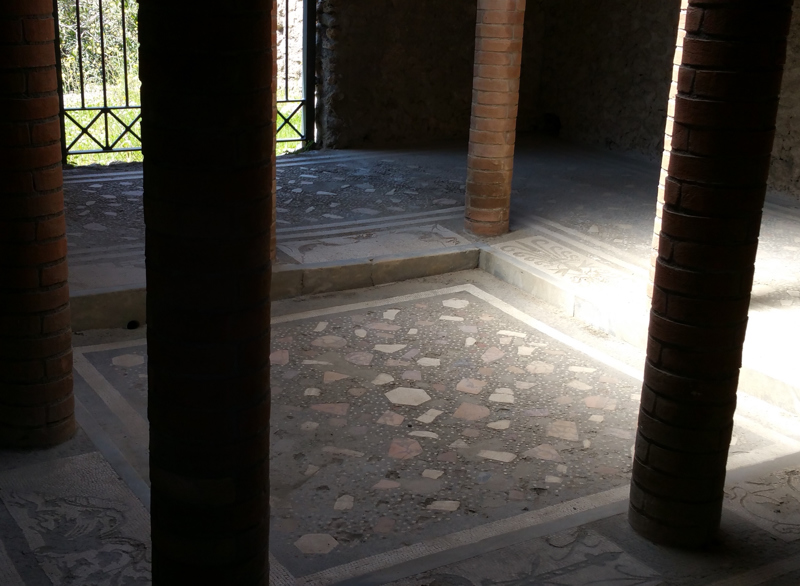
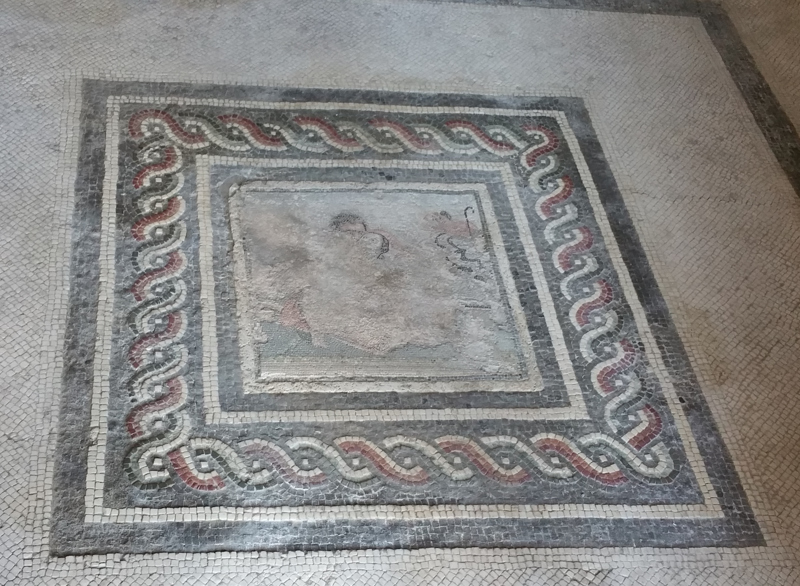
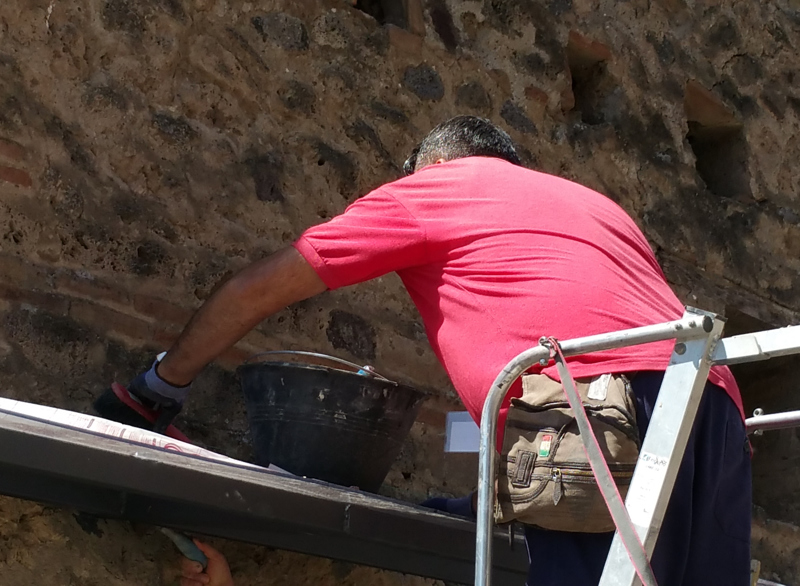
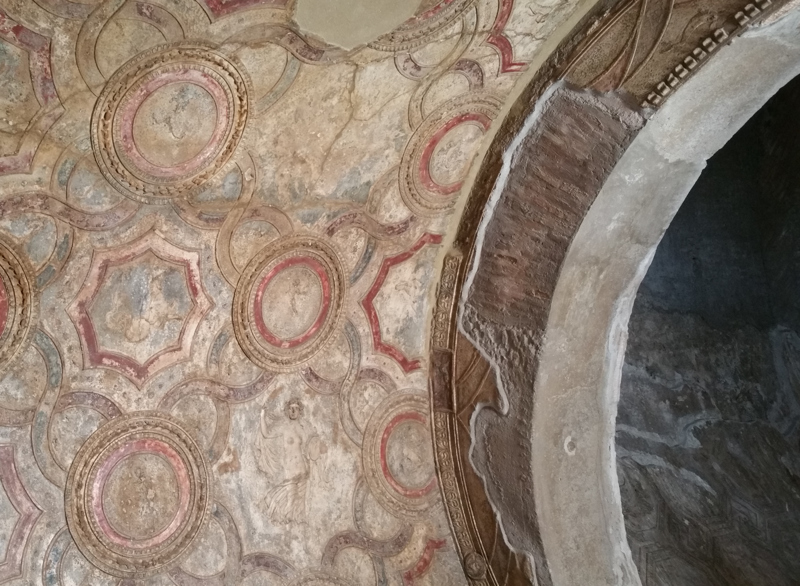
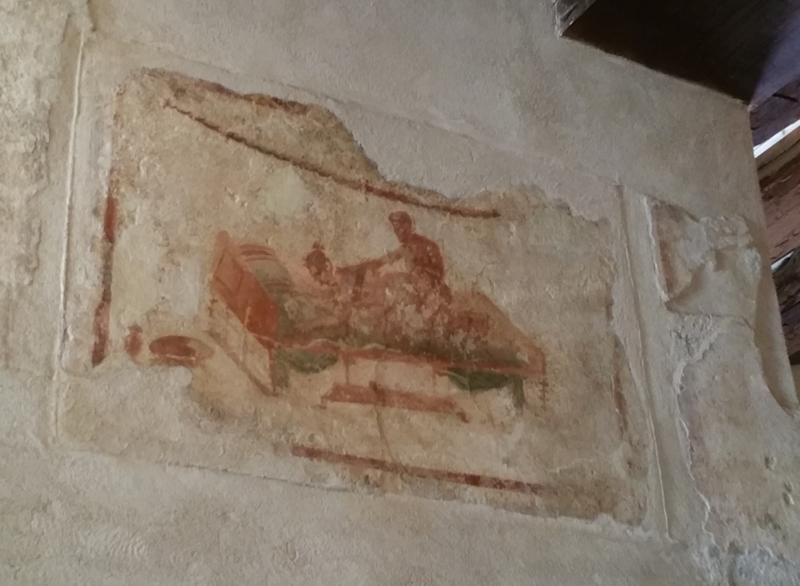
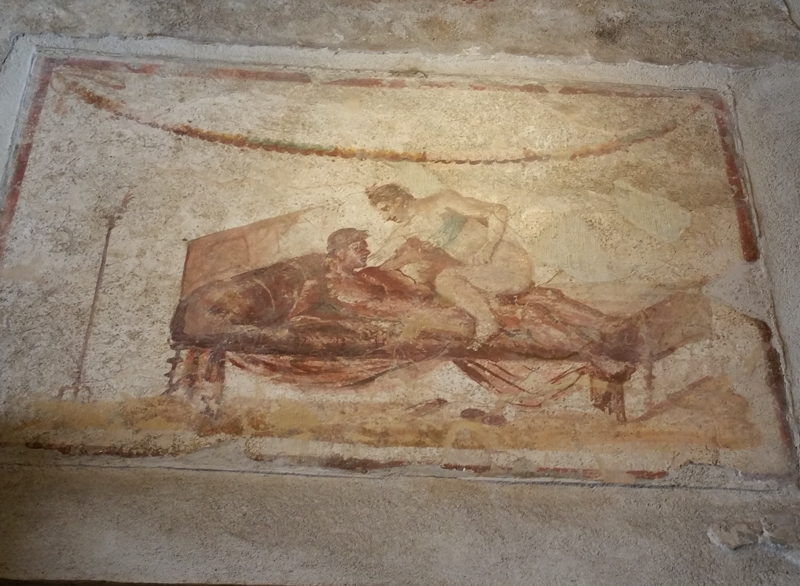
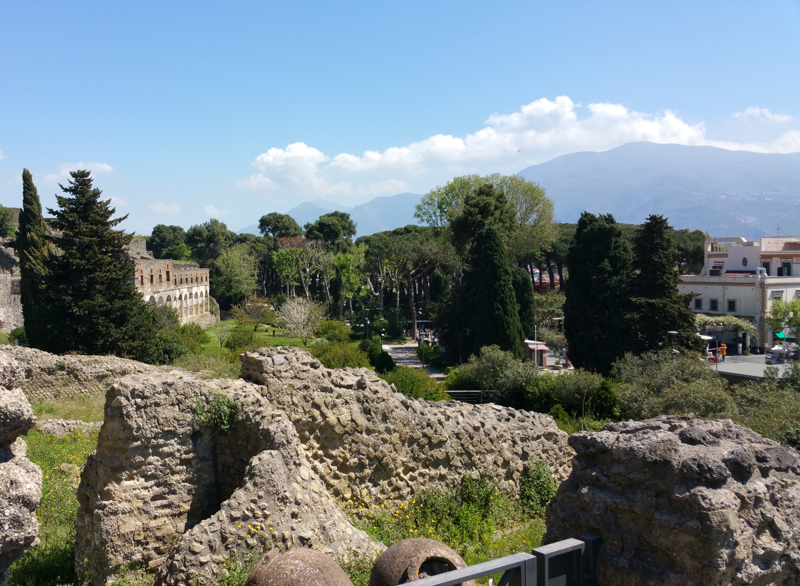
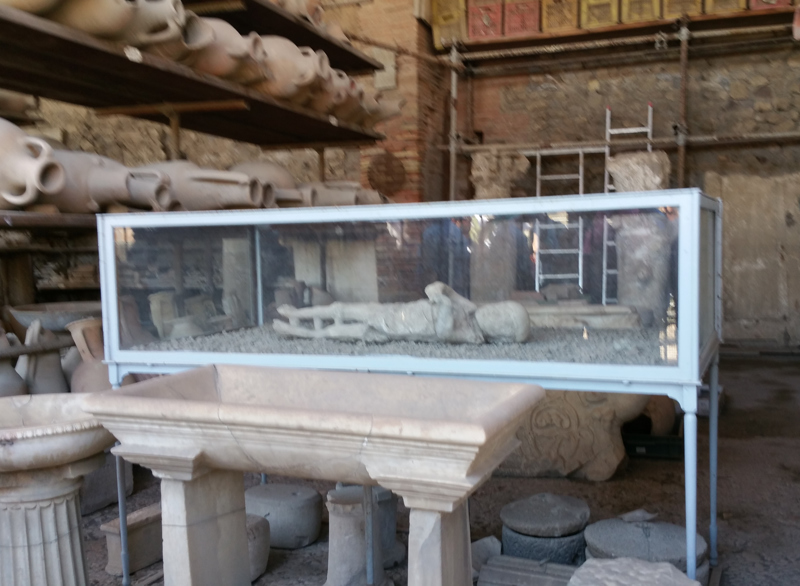
April 15, 2016 (Continued)
The bus lets us out and we start up the hill to the ruins of this once-thriving commercial port. Time stopped for the estimated 20,000 inhabitants of Pompeii on August 24, A.D. 79. It was on that day that Mount Vesuvius erupted and blasted a plume of ashes, pumice, rocks and scorching hot volcanic gases so high into the sky that people could see it from hundreds of miles away. As it cooled, this tower of debris drifted to earth: first the fine-grained ash, then the lightweight chunks of pumice and other rocks. It was terrifying, but at this point, most Pompeiians had plenty of time to flee. For those who stayed behind, however, conditions soon grew worse. As more and more ash fell, it clogged the air, making it difficult to breathe. Buildings collapsed. Then a “pyroclastic surge” (a 100 mile-per-hour surge of superheated poison gas and pulverized rock) poured down the side of the mountain and swallowed everything and everyone in its path. By the time the Vesuvius eruption sputtered to an end the next day, Pompeii was buried under millions of tons of volcanic ash, and approximately 2,000 people were dead. At the bottom left of page 14 is a plaster cast of one of the victims of the volcano: the body of a child that was suffocated by the avalanche of gas and ash and encased in volcanic debris. Modern archaeologists have discovered a way to make casts of the victims. While excavating, they detected hollow spaces under the ground, which were created by the composition of victims' bodies. By filling the holes with plaster, the archaeologists were able to create molds of the Pompeiians who perished in the disaster.
April 15, 2016 (Continued)
As you can see from the picture on page 14, the excavation and preservation of Pompeii continues today.
The pictures on pages 12-14 give a glimpse into everyday life in Pompeii. Of particular note are the beautiful mosaics and the frescoes. The frescoes on pages 13 and 14 are from the largest brothel in the city and represent a menu of sorts for the various services offered. All the client had to do (other than pay!) was to point to the picture of the service he/she desired, and the rest, as they say, really is history!
After the tour of Pompeii, I caught a bus back to the hotel, where Gary was finishing his work day. We relaxed a bit by having a Prosecco in the hotel lobby, then we were off on another tour! We had booked a tour of "Naples by Night", but didn't realize until the tour guide, Giuseppe Paesano (pictured on pages 17 and 21), came to pick us up in his Mercedes that we were the only ones on the tour. Needless to say, we had a very "up close and personal" tour of Naples by night!
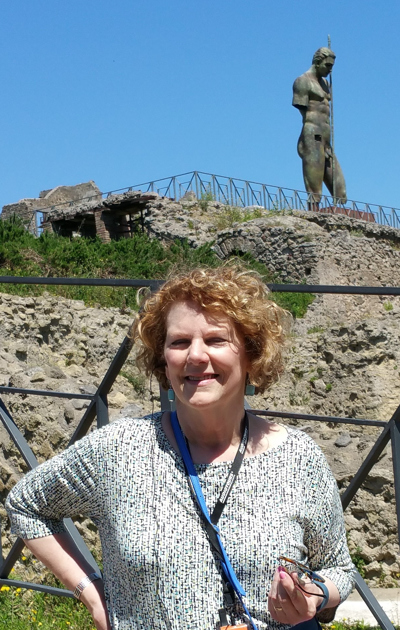
April 15, 2016 (Continued)
Giuseppe took us to the Via San Martino for a view of the city from above at dusk, where we could see the three islands in the Bay of Naples: Ischia (the largest); Capri and Procida. Giuseppe's father was born on Ischia. He was a swimmer and in 1960 swam from Naples to Capri in the "Maratona del Golfo Capri-Napoli" (a distance of about 36 kilometers), coming in second. After some Neopolitan pizza at Filume Bistrot Napoletano, our tour concludes and Giuseppe drops us off at our hotel.
Below: Gary with Giuseppe; view of Mount Vesuvius; more views of the Gulf of Naples
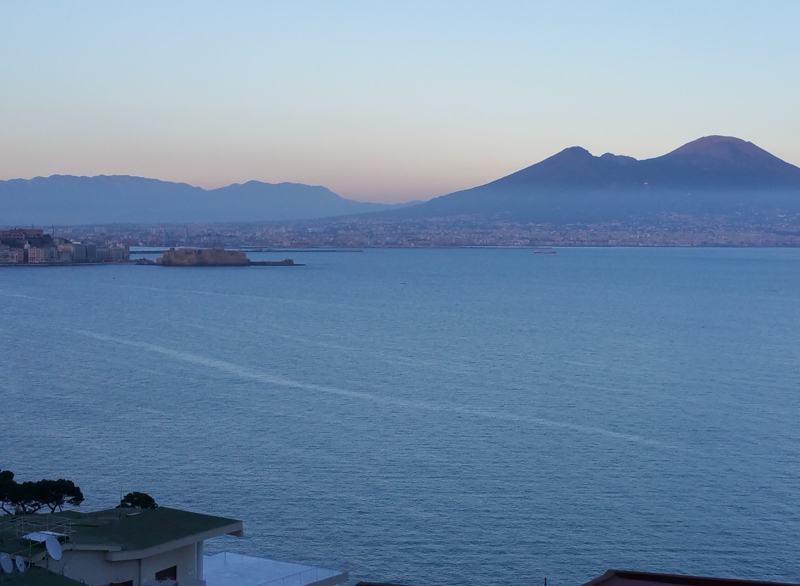
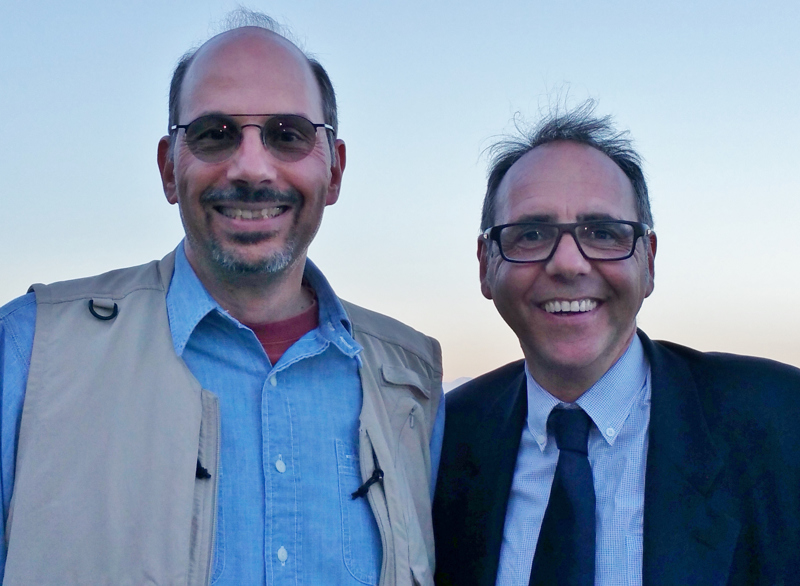
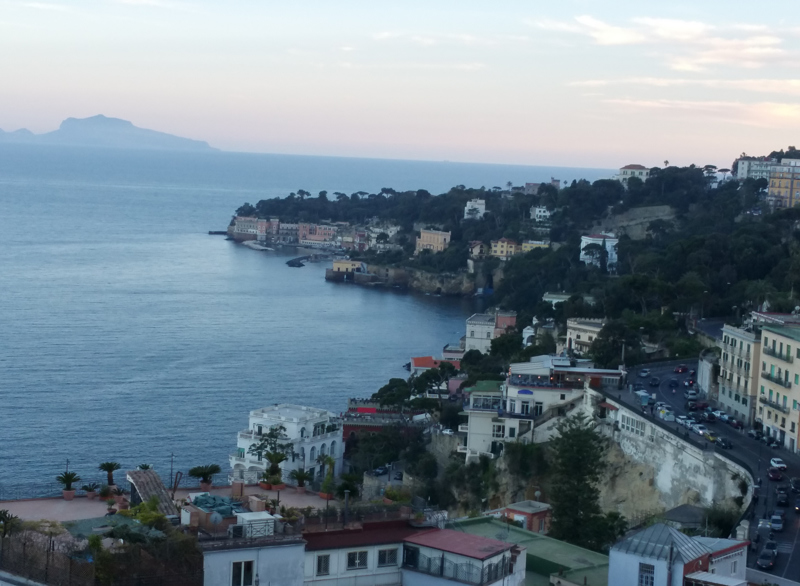
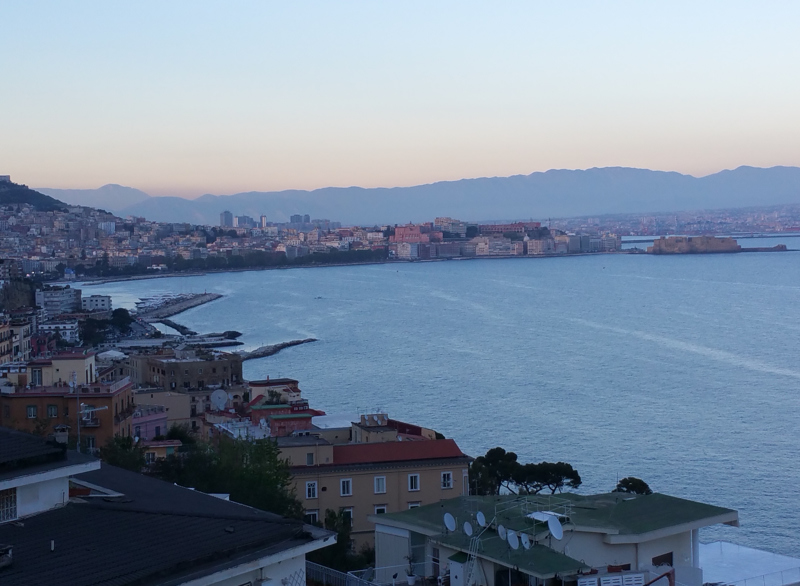
Above: Gary in front of Church of San Francesco di Paolo in the Piazza del Plebiscito ; exterior and interior of Church of Santa Maria di Piedigrotta
Right: Sunset on Gulf of Naples; stone pine trees line the sidewalk; restaurants on the peninsula leading to the Castel dell'Ovo (Egg Castle), pictured on page 20, which is the oldest standing fortification in Naples. According to the legend, the Roman poet Virgil put a magical egg into the foundations of the castle to support the fortifications. Had this egg been broken, the castle would have been destroyed and a series of disastrous events would have befallen the city of Naples
Pages 20-21: Castel dell'Ovo at night; Palazzo Donn'Anna; other pictures from our "Naples At Night" tour with Giuseppe
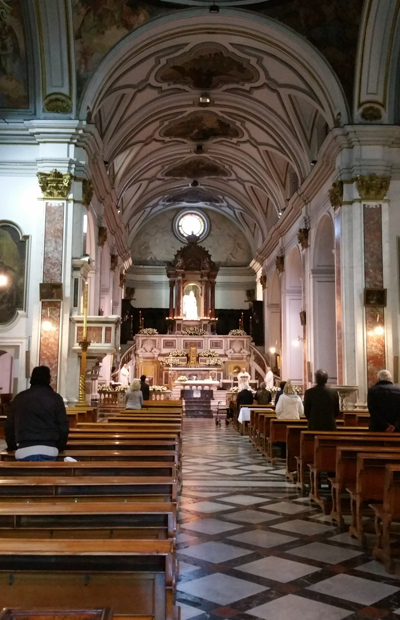
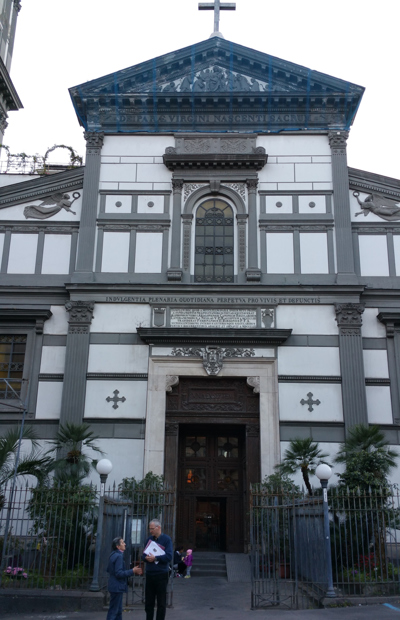
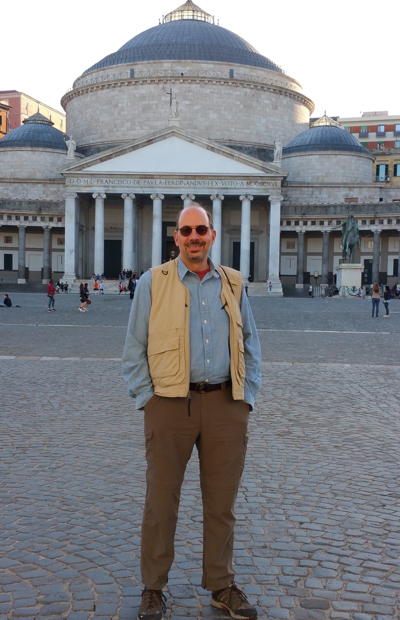
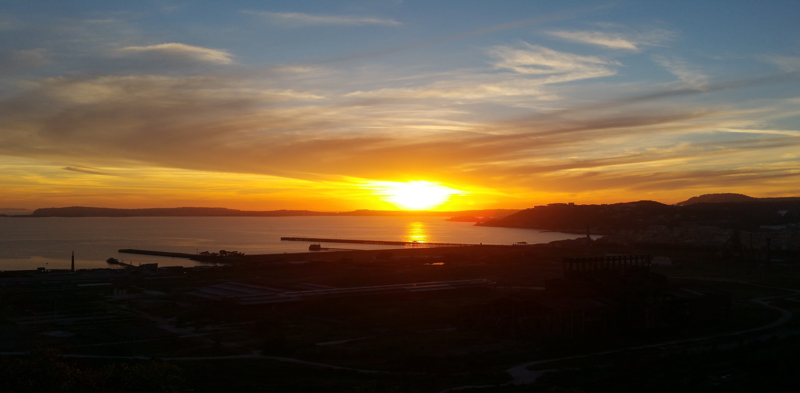
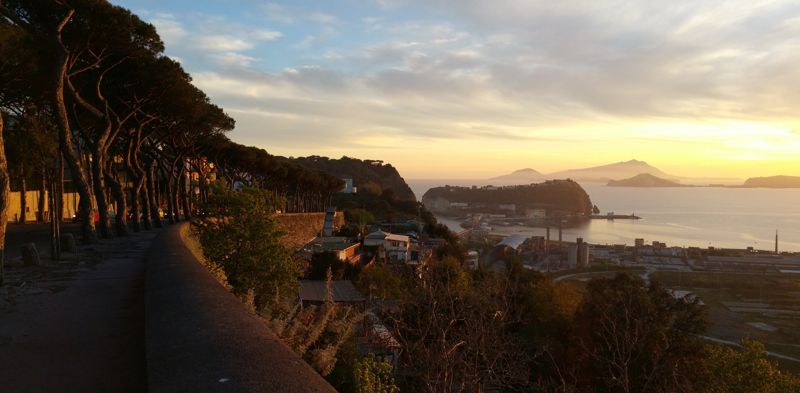
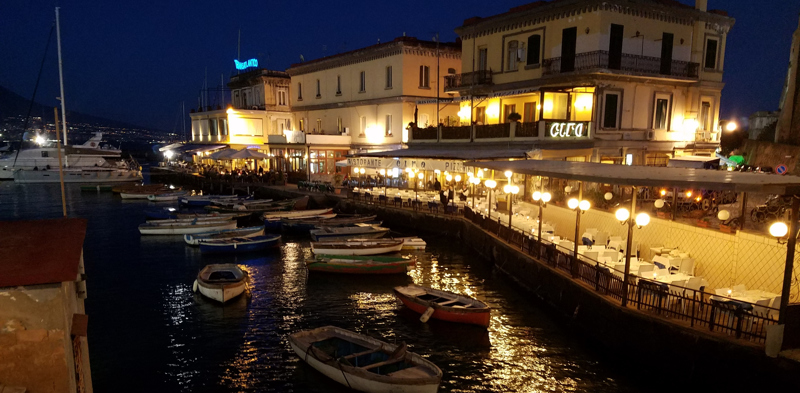
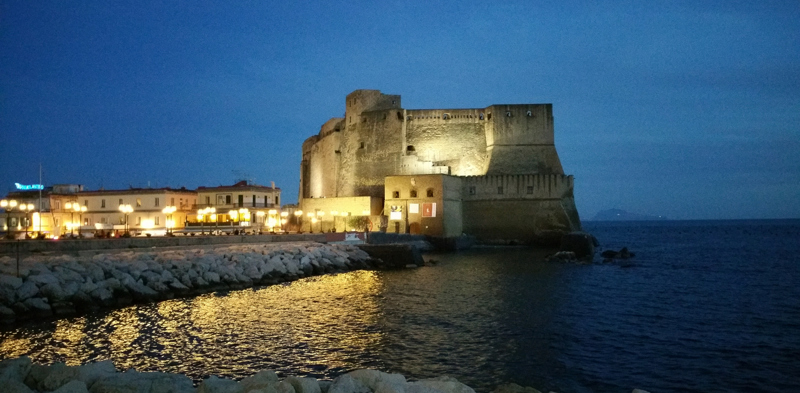
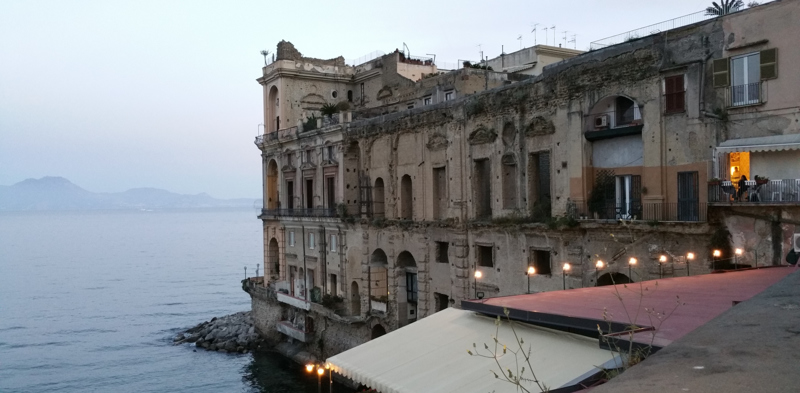
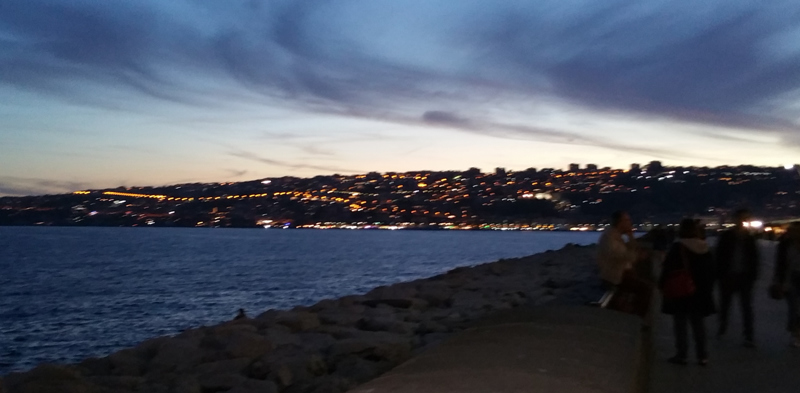
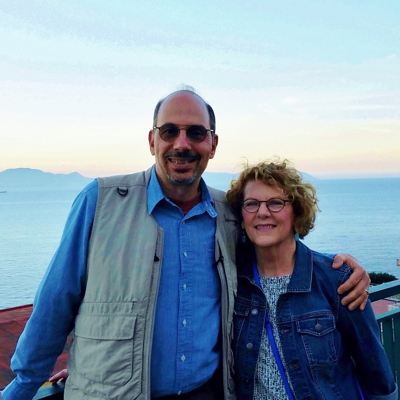
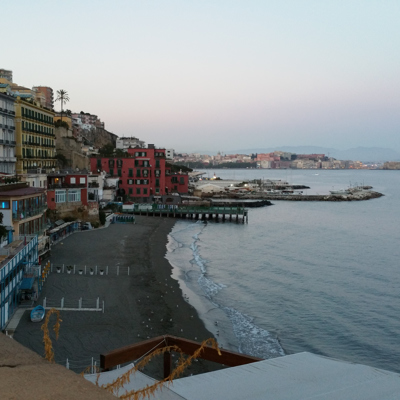
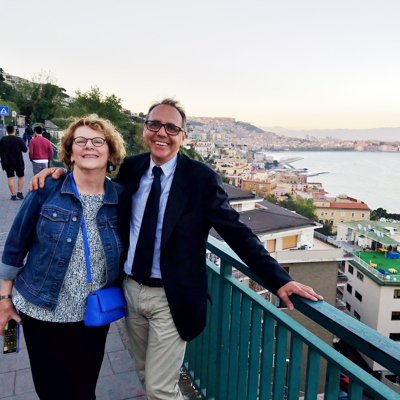
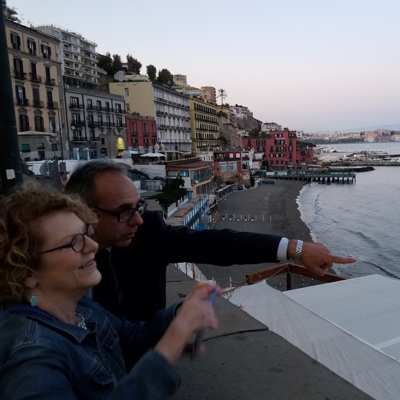
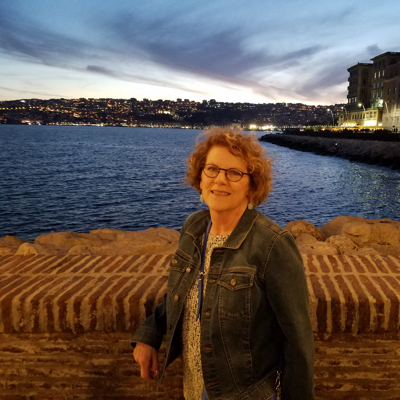
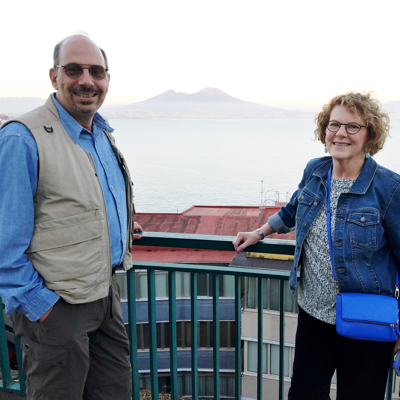
Share your travel adventures like this!
Create your own travel blog in one step
Share with friends and family to follow your journey
Easy set up, no technical knowledge needed and unlimited storage!